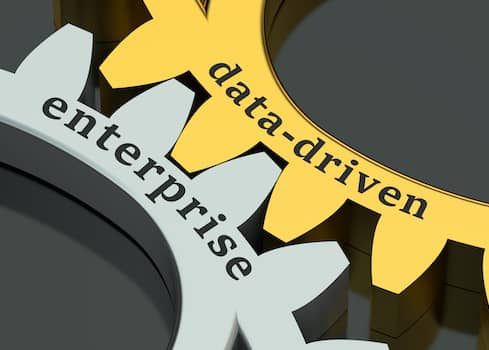With greater competition in a digital world, it's urgent for organizations to prioritize their projects to become data driven.

Enterprise organizations understand harnessing the insights from data to make better business decisions can provide a competitive edge, particularly in the new digital economy. Advanced analytics and AI can drive recommendation engines, better customer service, insights into the best product and service development avenues, protection against fraud and cyberattacks, and plenty more.
“There seems to be a unanimous consensus that for companies to compete in a digital economy, they must be data-driven,” writes Randy Bean in his new book Fail Fast, Learn Faster: Lessons in Data-Driven Leadership in an Age of Disruption, Big Data, and AI. Bean is CEO of NewVantage Partners, a strategic advisory and management firm specializing in helping leaders with data strategy, and a frequent contributor to publications including Harvard Business Review, MIT Sloan Management Review, and The Wall Street Journal.
But just because nearly everyone agrees that something should happen doesn’t necessarily mean that many know how to get there. The road to being data-driven is littered with obstacles, even while C-suite executives have hit the gas pedal on tech investments.
Maybe that’s because the biggest obstacle to becoming data-driven isn’t the lack of technology investments. You’ve probably heard this before. The biggest impediment to becoming data driven for so many organizations is cultural, says Bean, in an interview with InformationWeek.
Indeed, in NewVantage Partners annual survey of executives and their efforts to become data-driven, 92.2% of respondents said that the top obstacle to becoming data-driven is culture. Only 7.8% said it was technology.
“Companies have vast stores of data, but they are highly fragmented and decentralized,” Bean says. “There’s often not incentives within organizations to collaborate and work together to share data for common benefits.”
To speed up the effort, many organizations created a new role -- chief data officer or chief analytics officer. It’s been a little over a decade since these new C-executives have appeared on the scene. Bean says that these executives first appeared at large banks in response to the 2008-2009 financial crisis. The focus of these CDOs was implementing standards and safeguards for managing data to mitigate risk and avoid future systemic financial failures.
While the role of these first CDOs was focused on regulatory compliance and risk mitigation, CDOs today have added another set of duties to their list of responsibilities. Now they are also expected to spearhead proactive data-driven initiatives to better understand customer behavior, develop new products, improve wallet-share and increase revenue, according to Bean’s new book. In the 2021 NewVantage Partners survey of large, data-intensive firms, 65% said they had a chief data officer in place.
Bean says that CDOs have been experiencing a lot of turnover recently. For instance, over the past two years CDOs have left companies including JPMorgan Chase, Wells Fargo, Goldman Sachs, American Express, AIG, Travelers, Nationwide, Charles Schwab, USAA, TD Bank, Bank of Montreal, Freddie Mack, and Prudential, according to Bean.
“There’s not a week or two that passes that I don’t hear from a CDO saying they are moving from one company to another company,” he says. “Many companies are in their fifth or sixth generation of CDOs.”
Sometimes companies will be looking to hire outside change agents. Other times they will look to hire organization veterans who know the business and the culture already.
Bean says that as we head into 2022 the role of CDO will gain more importance. Organizations will be looking to leverage their unstructured data sources and their AI capabilities, for instance. They will call on data leaders to spearhead that effort.
The foundation of a data-driven transformation will be different for every company in every industry, depending on many factors. But the cornerstones are the same, according to Bean. They include establishing and implementing plans, policies, and procedures in each of the following four areas: data strategy, data governance, data management, and change management and business adoption. These will be key for leaders looking to compete in the data-driven marketplace of the future.
“Now more than ever, industry leaders must adapt to compete in an era of disruption,” Bean says.
What to read next:
Nvidia Places Bet on AI Enterprise Software On-Premises
IBM Showcases Strategic Digital Changes at the 2021 US Open
About the Author(s)
You May Also Like







